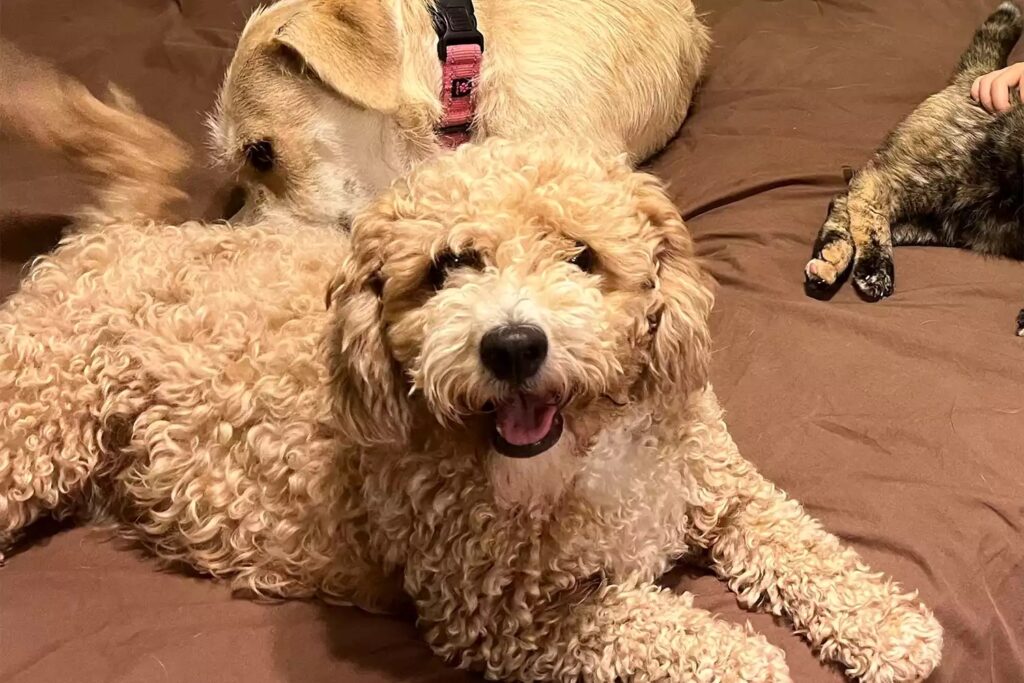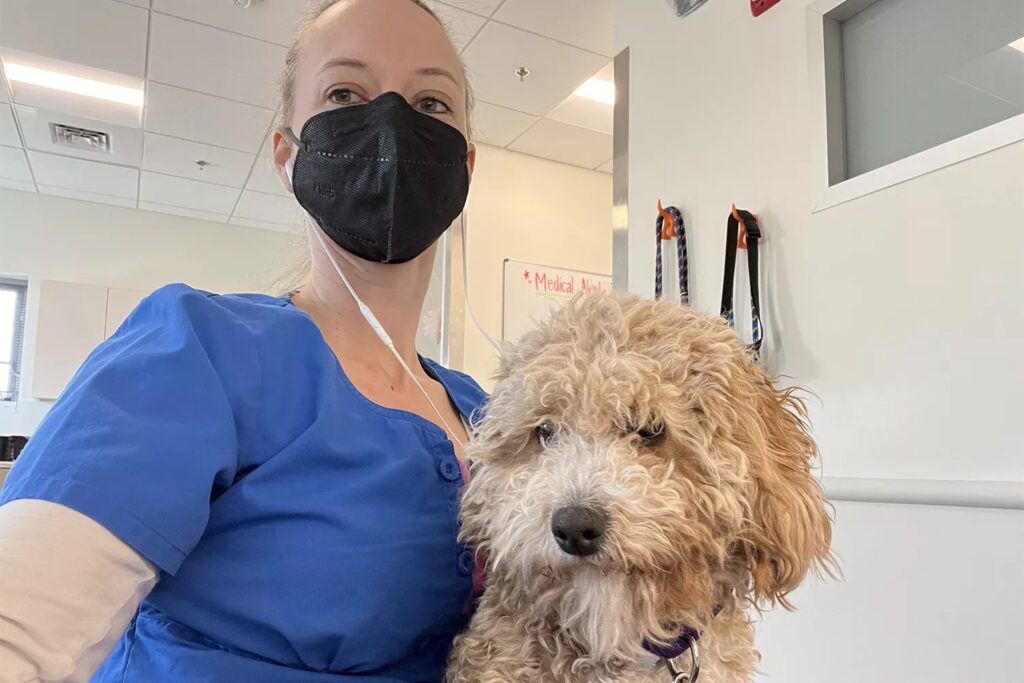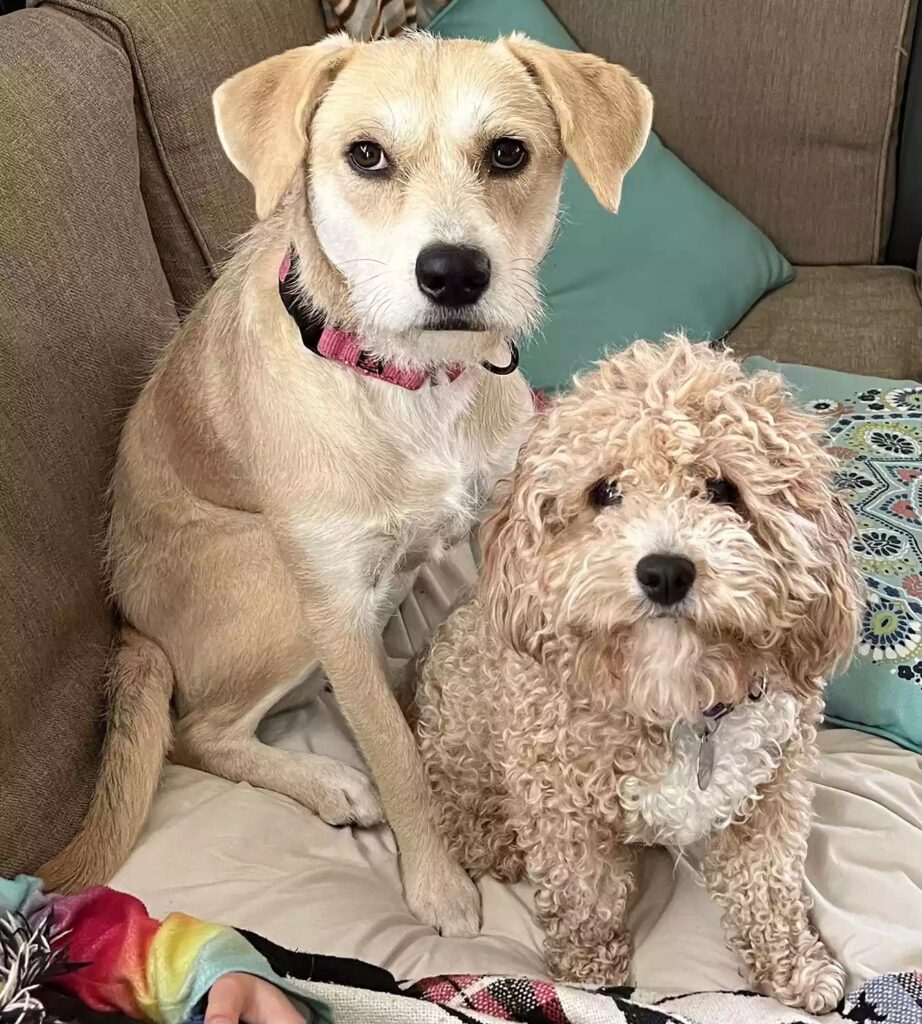
Lolly was one of the over 500 under-socialized, scared dogs that the ASPCA rescued from neglectful conditions at an Iowa puppy mill in Nov. 2021, and now the canine is helping other pups.
Lolly believes in a dog-help-dog world.
In Nov. 2021, the innocent canine was one of the over 500 dogs that the ASPCA rescued from deplorable conditions at an Iowa puppy mill. Now, she is a “helper dog” at the ASPCA Behavioral Rehabilitation Center (BRC) in Weaverville, North Carolina, where she helps guide fearful dogs through new activities.

Lolly’s journey from “nervous” puppy mill rescue to hero helper dog started last year after the ASPCA pulled Lolly from the Iowa breeding facility. Following her rescue, Lolly went to an emergency shelter operated by the ASPCA for initial exams and treatment.
According to the ASPCA, Lolly had matted fur, internal parasites, dental disease, and a severe infection during her first medical exam. After receiving treatment for these issues, Lolly was transferred to the BRC to address her avoidant behavior toward human interactions and walking on a leash.
“The BRC is the first-ever permanent facility dedicated to the study and behavioral rehabilitation of canine victims of cruelty and neglect. After being rescued from the Iowa puppy mill, Lolly needed support with her fear and under socialization, and came to the BRC for treatment,” Darren Young, CPDT-KA, Lolly’s behavioral rehabilitation specialist at the BRC, tells PEOPLE.
“At first, Lolly was nervous and pacing, her stress even causing her paw pads to sweat,” Young adds of Lolly’s initial behavior.
Young is used to working with dogs demonstrating “severe fear.” The BRC cares for numerous puppy mill rescues each year. Young says dogs saved from these situations “have almost always lived in isolated environments, where they had little, if any, exposure to the outside world.” Young focused on training with Lolly to help the dog gradually overcome her fears.

“Our team employed evidence-based training methods to help Lolly learn to create positive associations with new people and places, and walking on a leash. As the weeks passed, she began to come out of her shell with the help of our team as well as other dogs in the program, including some of whom were also rescued from the same puppy mill. Eventually, Lolly was more and more excited to work with her handlers and began to solicit our attention — seeking pets and time spent in our laps,” the behavioral rehabilitation specialist says of Lolly’s training journey.
“After six weeks, Lolly was ready for ‘graduation.’ She was enjoying spending time with people, car rides, and exploring local parks,” he adds.
Today, Lolly lives with her forever family, which includes Dr. Ashley Eisenback, DVM, the senior director of veterinary services at the BRC.
Dr. Eisenback met Lolly at the BRC when the dog was approaching graduation and needed a vet visit to address overgrown fur near her eyes.
“Lolly seemed to be able to warm up to people fairly quickly and enjoyed playing with larger dogs at the BRC. This behavior really captured my interest as our family was wanting to adopt a smaller dog that would be a companion for my two daughters and our relatively new young dog,” the senior director said of her first impressions of Lolly.
Dr. Eisenback decided to adopt Lolly, who quickly made herself comfortable with her new family.

“We saw progress with Lolly becoming more comfortable in our home each week. She had never been in a home before ours, so there was a lot for her to experience and adjust to. Now, she is fully part of the family and does everything with us. She loves sitting and cuddling with us and being petted. She loves walks in the neighborhood and exploring new places. She sleeps with my youngest daughter every night,” Dr. Eisenback says.
A year after her rescue, Lolly no longer needs the BRC’s services, but she still visits the center often.
“Lolly pays it forward by coming to work with me at the BRC often to serve as a helper dog for other dogs moving through the program. She also helps me teach children that are afraid of dogs, that dogs are kind and gentle,” her owner adds.
At the BRC, helper dogs encourage fearful dogs to explore and enjoy new experiences.
“Helper dogs can act as guides, showing a fearful dog how to walk on a leash, jump into a car, or even how to happily engage in play. The helper dog often gives the fearful dogs the confidence they need to interact with people and their environment. This, in turn, helps them to feel more relaxed and allows their personalities to blossom,” Young explains.

Even the rescue dogs that don’t come through the BRC benefit from Lolly’s recovery because the dog’s success shows that all neglected animals deserve a second chance.
“Dogs are very resilient when we are patient with them. Fearful dogs can become wonderful companions with patience and understanding,” Dr. Eisenback says.




